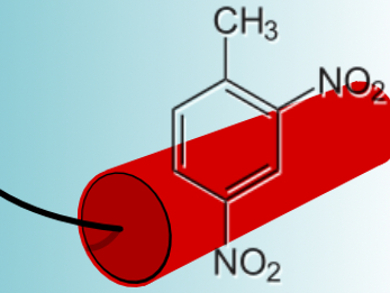The detection of trace explosives, especially nitroexplosives, has become an urgent need to fight the increasing terrorist threat. While numerous sensing materials have been developed for this purpose, it seems there is still a gap between laboratory environment demonstration and actual field application.
In pursuit for a practical method to detect 2,4-dinitrotoluene (DNT), a common explosive as well as an impurity present in TNT, Chengguo Hu, Shengshui Hu, and colleagues, Wuhan University, and Chinese Academy of Sciences, Beijing, China, have developed a simple electrochemical sensor based on a gold-polyvinylidene fluoride sandwich structure doped with ferrocene-containing ionic liquids.
This sensor is capable of identifying DNT in the solid state on various surfaces, such as plant leaves, gloves, and metal knives, without any pretreatment, and the limit of detection is as low as 0.33 ng/mm2. The fabrication strategy can be extended for sensors targeting other substrates in similar environments.
- Rapid in Situ Detection of Ultratrace 2,4-Dinitrotoluene Solids by a Sandwiched Paper-like Electrochemical Sensor,
Juan Wang, Wei Jin, Xing Zhang, Chengguo Hu, Qingying Luo, Yi Lin, Shengshui Hu,
Anal. Chem. 2014.
DOI: 10.1021/ac501973x




